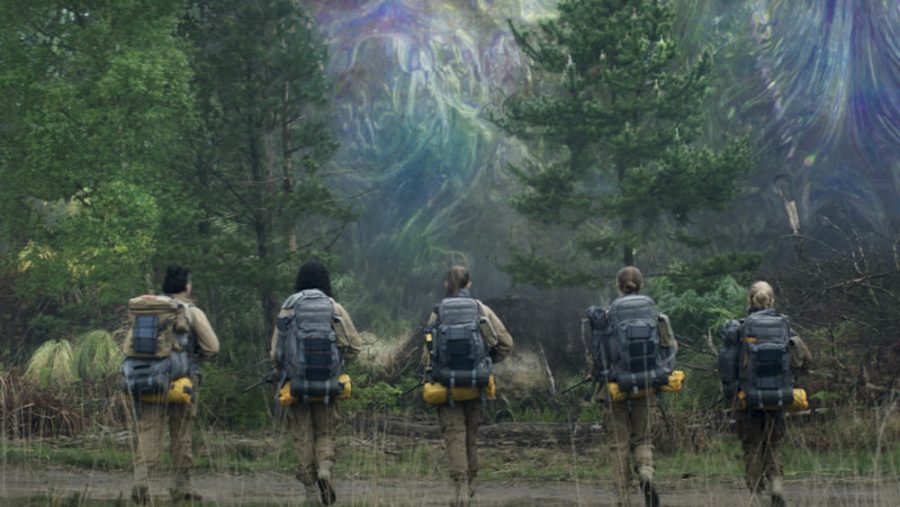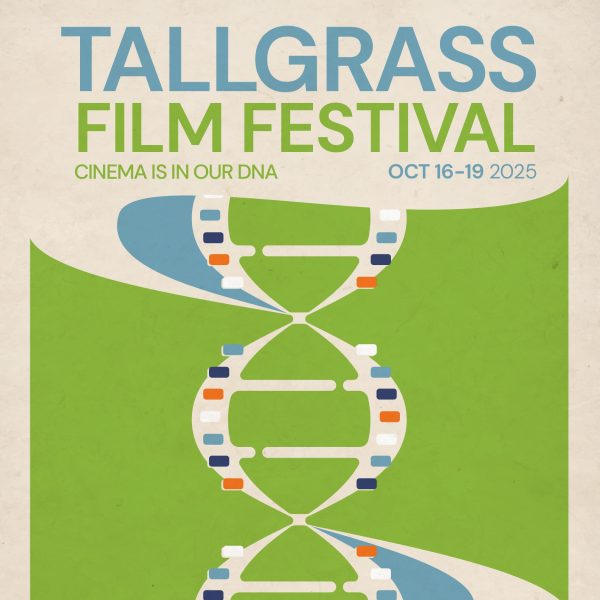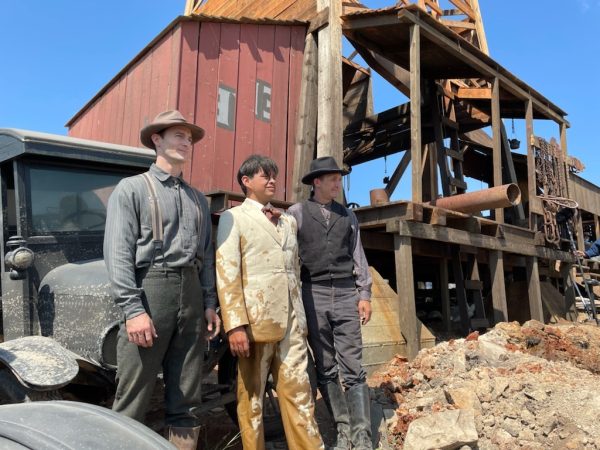‘Annihilation’ is bold, bizarre
A scene from “Annihilation.”
Watching “Annihilation” is akin to lucid dreaming — existing in a state of awareness in which, deep down, you know you are unconscious. The latest film from Alex Garland (“Ex Machina,” “Sunshine”) is enveloped in a hallucinogenic haze, a sci-fi fever dream in which the limits of reality are pushed against, prodded and tested.
What results is a film that beautifully asks a lot of very tough questions without giving a lot of very definitive answers. It is a puzzle of a movie, one that demands patience, but in time reveals itself in all of its strange and terrible beauty to the viewer.
“Annihilation” follows Lena (Natalie Portman), a professor of Biology at John Hopkins, whose husband Kane (Oscar Issac) returns from a clandestine mission changed. “Annihilation” traces an arc as she discovers that her husband wasn’t overseas, but instead inside the “Shimmer.”
The Shimmer (aptly named, for it looks like a soap bubble about to burst — complete with the holographic multicolor swirl one usually finds on an oil slick) is the residue from an asteroid crashing into the Earth three years ago; an alien dome that mutates and changes everything inside of it, including those who enter. Lena volunteers for the next ongoing mission to go inside the Shimmer, backed up by Jennifer Jason Leigh, Tessa Thompson, and Gina Rodguriez.
This is a very talented group of actresses whose previous films already display their considerable talents, but “Annihilation” has them operating on a much more subdued level, with only the occasional outburst of outright emotion. Chalk this up to their professions (psychologist, physicist, and paramedic respectfully) they all attempt to operate within a clinical and reserved capacity. However, you can imagine this all disintegrates once they enter that alien zone.
What follows from this intriguing premise is a film that is slow yet subtly terrifying, unfolding itself slowly like a deformed flower. Sick, yet beautiful. The environment inside the Shimmer is two steps removed from reality, close enough to recognize, but far enough away to be considered alien. Flora and fauna alike have changed almost beyond recognition, and Garland does a good job at revealing this world to the viewer through the considerable use of lens flare and disorienting camerawork.
The soundtrack lingers just above the surface, dropping into something otherworldly when the action begins to ramp up or another twisted and strange image asserts itself on screen. This movie relishes in its aesthetic, a cross between something visually pleasing and just slightly off-center, like a Venus flytrap. Also featuring one of the most nightmarish monsters to grace the silver screen in years, Garland’s command of the aesthetic really establishes the tone of the world he’s created.
However, this world is complex, and the preparation required for setting up these pieces for the viewer is somewhat elaborate. The first act features dialogue that is somewhat clunky and laden with the heavy work of exposition and establishing motivation. For every paradoxically pretty and strange image Garland crafts, there seems to be a piece of dialogue waiting to undercut its full effect. Furthermore, this movie also takes its time in creating its mouse trap, and it isn’t until they fully enter the Shimmer do things really start to come together.
“Annihilation” is a bizarre film, and one that probably requires repeat viewings to glean all the information from it. The last twenty minutes are some of the strangest and boldest I’ve seen in a science-fiction film in quite some time. There’s an audacity to the filmmaking on display here that is divisive but admirable, and the few people who see this film in theaters will no doubt have many questions and not a lot of answers to show for it.
But, despite all this, there’s an intelligent core at the center of this film — a steady hand keeping the whole process in motion. And while the end product is unusual, it is also confident and assured and a dense piece of science-fiction storytelling worth seeking.











